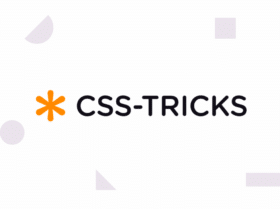Breaking the monotony of routine testing is a challenge many software testers face.
The answer lies in embracing unconventional methods, such as participating in hackathons or coding challenges, collaborating with professionals from diverse fields, or volunteering for open-source projects.
But can these unusual approaches really help you grow as a tester and improve your software testing and quality assurance skills?
A closer look at the experiences of testers who have ventured off the beaten path may hold the key.
Collaborate with Other Testers to Share Knowledge and Explore New Ways of Thinking
By collaborating with other testers, you can leverage collective expertise and experiences to identify and fill knowledge gaps, eventually broadening your testing perspectives and skill sets.
You’ll uncover new approaches and techniques that you can apply to your own testing work, improving your comprehensive efficiency and effectiveness.
As you collaborate, you’ll also learn from others’ strengths and weaknesses, gaining insight into how they approach testing challenges. This shared knowledge will help you refine your testing methodologies, adopt best practices, and avoid common pitfalls.
By working together, you’ll accelerate your testing skills development, drive innovation, and finally deliver higher-quality software products.
Collaboration also fosters a culture of continuous improvement, encouraging you to reflect on your own testing practices and pursue ongoing learning and growth.
Continuously Learn and Stay Up-to-Date with the Latest Industry Trends

As you expand your testing expertise through collaboration, you must also prioritize ongoing education to stay current with the rapidly evolving software testing landscape, embracing new methodologies, tools, and technologies that can further refine your skills.
You’ll need to stay informed about the latest testing frameworks, automation tools, and quality assurance methodologies. Regularly read industry blogs, attend webinars, and participate in online forums to stay up-to-date.
You should also investigate relevant certifications, training programs, and workshops to enhance your skills. By continuously learning and adapting to new trends, you’ll be better equipped to tackle complex testing challenges and deliver high-quality software products.
This proactive approach will also help you stay competitive in the job market and advance your career in software testing.
Integrate Artificial Intelligence and Machine Learning into Testing Processes
To further enhance your testing capabilities, you should leverage artificial intelligence (AI) and machine learning (ML) technologies to automate repetitive tasks, identify complex patterns, and predict potential defects in software applications.
By integrating AI and ML into your testing processes, you can increase efficiency, accuracy, and reliability. For example, AI-powered tools can analyze extensive amounts of data to detect anomalies and identify areas that require more testing.
Moreover, ML algorithms can learn from historical data to predict potential defects and identify high-risk areas. By embracing AI and ML, you can optimize your testing efforts, reduce manual errors, and improve overall software quality.
This strategic approach will help you stay ahead in the rapidly evolving field of software testing.
Implement Test-Driven Development to Write Tests Before Writing Code

Test-driven development (TDD) empowers you to write more robust and reliable code by requiring that you write automated tests for specific functionality before you actually implement that functionality. This approach guarantees that your code is testable and meets the required functionality. By writing tests first, you’ll avoid writing unnecessary code and reduce bugs.
| TDD Step | Description |
|---|---|
| 1. Write Test | Write a test for a specific functionality |
| 2. Run Test | Run the test and see it fail |
| 3. Write Code | Write the minimum code to pass the test |
| 4. Refactor | Refactor the code to make it more maintainable |
| 5. Repeat | Repeat the process for each functionality |
Engage in Exploratory and Ad Hoc Testing to Complement Automation
By complementing your automated testing with exploratory and ad hoc testing, you uncover issues that may have slipped through the cracks of your automated tests, revealing nuanced defects and unexpected interactions that can only be detected through hands-on, human-driven evaluation.
As you engage in exploratory testing, you mimic real-world user behavior, identifying edge cases and exercising the system in ways that automation can’t.
Ad hoc testing allows you to be spontaneous, testing specific features or areas of concern without prior planning.
This dual approach guarantees a more thorough assessment of your software’s quality, as you leverage the strengths of both automated and manual testing to discover defects that might’ve otherwise gone undetected.


















